Talking about top-funnel, mid-funnel, and bottom-funnel marketing might feel outdated, like a relic from a time when the buyer’s journey was imagined as a tidy, predictable path:
- Top-Funnel: Where consumers identify a need and learn about a brand or product.
- Mid-Funnel: Where they compare options and build consideration for that brand or product.
- Bottom-Funnel: Where they finally take action and convert.
But let’s be real—the modern buyer’s journey is anything but simple or linear. Today’s consumers are inundated with content and ads, bouncing between platforms, recommendations, and rabbit holes of research. They might go from discovering a product in the morning to buying it by lunch—or take months, even years, to decide.
At Bloom, instead of a linear funnel, we see the purchasing journey as a loop: a continuous cycle of discovery, consideration, purchase, and advocacy. Buyers may enter or exit at any point, revisit decisions, or even skip steps altogether.
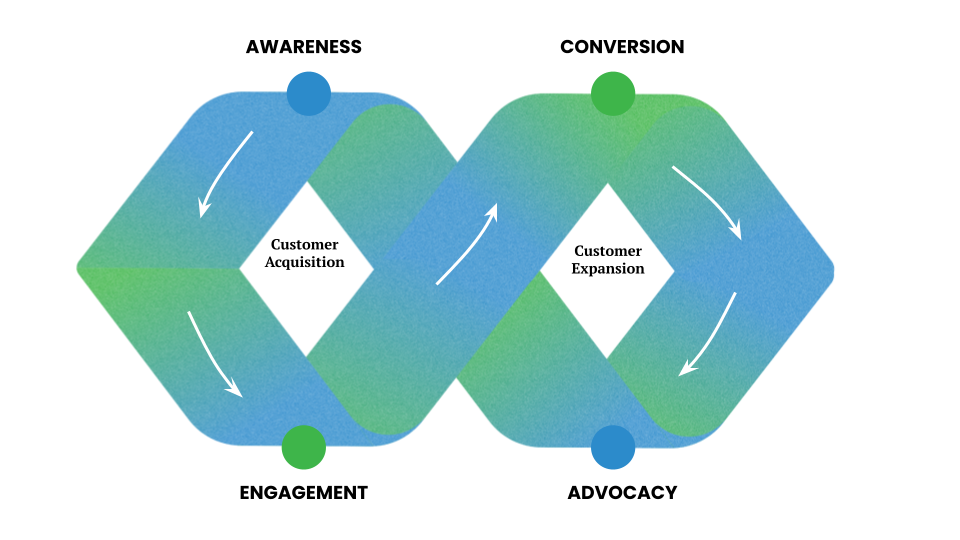
What we traditionally called “mid-funnel tactics” might be better described as engagement or consideration tactics—the strategies that keep your brand relevant as consumers explore their options.
Whether you view it as a funnel or a loop, the essence of mid-funnel marketing remains the same: keeping your audience engaged, earning their trust, and delivering value at the right moment. And in today’s unpredictable world, that’s no easy feat.
Let’s unpack what modern mid-funnel marketing looks like in 2025—and how you can build trust and relevance at this critical stage.
Mid-Funnel Marketing Tactics
Let’s start with the foundation: your mid-funnel tactics are only as strong as your top-funnel strategy. If you’re not consistently growing your pool of prospective buyers—whether through organic efforts or paid campaigns—your mid-funnel efforts won’t have much to work with. Raising awareness and ensuring your product is discoverable is step one.
Once someone becomes familiar with your product, that’s where mid-funnel marketing shines. This is your chance to nurture interest, guide consideration, and build trust with potential buyers.
Remember, the goal here is to create meaningful engagement—offering value, answering questions, and addressing hesitations to ensure your brand remains top of mind.
There are many ways to do this, and honestly, the more you can do, the better—because the more touchpoints you create, the higher your chances of reaching your buyer wherever they are in their journey.
Your mid-funnel marketing tactics will depend on your industry, sales cycle, products, and target audience. However, some strategies are universal and can be adapted to fit most businesses.
Here are five mid-funnel tactics that I think consistently deliver results:
1. Social Proof
When it comes to mid-funnel marketing, few tactics are as impactful as social proof. Consumers are more likely to trust the experiences of others than marketing claims, which makes reviews, testimonials, and user-generated content (UGC) invaluable tools for building credibility and trust.
Social proof can and should be woven throughout the entire customer journey to maximize its impact. Here’s how:
- Your website: Highlight customer reviews, testimonials, and success stories on product and service pages to instill trust.
- Social ads: Use star ratings, customer quotes, or short testimonial videos in your ads to build confidence.
- Search ads: Incorporate seller ratings and callouts that showcase positive customer feedback.
- Organic social media: Regularly share UGC, customer shoutouts, or success stories to reinforce trust.
- Local listings for SEO: Encourage and display reviews on platforms like Google Business Profile, Yelp, or other local directories. Positive reviews not only boost your credibility but also enhance your search rankings, helping potential customers find and trust you more easily.
- Affiliate marketing: Partner with affiliates to share authentic reviews and experiences of your product, increasing visibility and credibility.
- Influencer marketing: Collaborate with influencers who align with your brand, using their endorsements as powerful and relatable social proof.
Klaviyo effectively uses social proof in their display ads to reinforce credibility. By highlighting case studies, customer success stories, and industry-leading brands that trust their platform, Klaviyo positions itself as the go-to email marketing solution for businesses looking to drive revenue and maximize ROI.
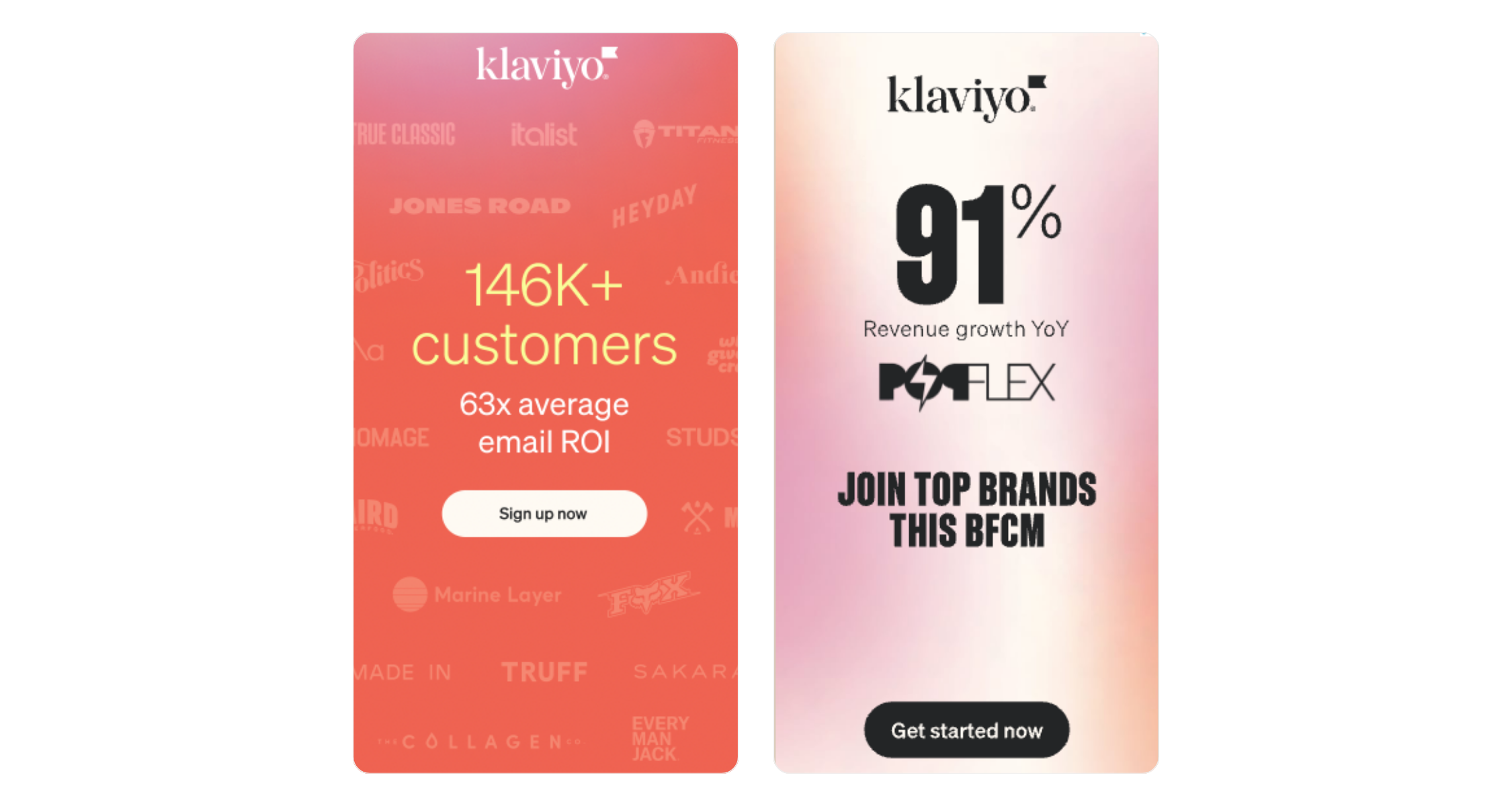
As for AG1, they strategically integrates social proof across its website to build credibility and reinforce the effectiveness of its product. By showcasing scientific studies, customer testimonials, and endorsements from high-profile figures, AG1 positions itself as a premium, research-backed supplement brand.
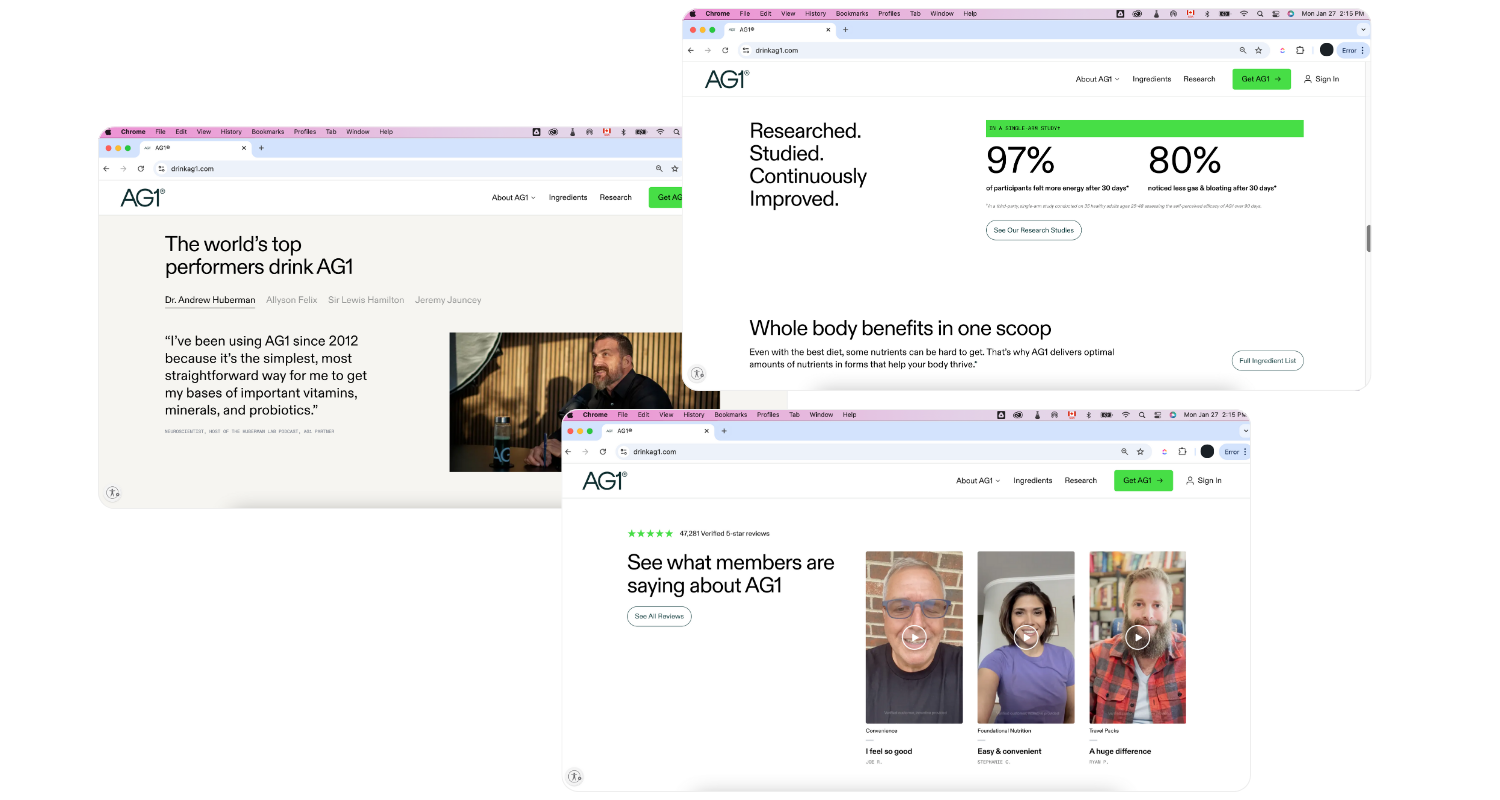
2. Remarketing Ads
Remarketing (or retargeting) is a tried-and-true mid-funnel strategy. Platforms like Google, Meta, and LinkedIn allow you to keep your brand in front of those who’ve already shown interest, such as website visitors from the past 30 to 90 days or users who’ve engaged with your social media posts.
Use these ads to highlight specific benefits or products, showcase testimonials or offer free trials to move them closer to a decision.
Remarketing Ads Examples
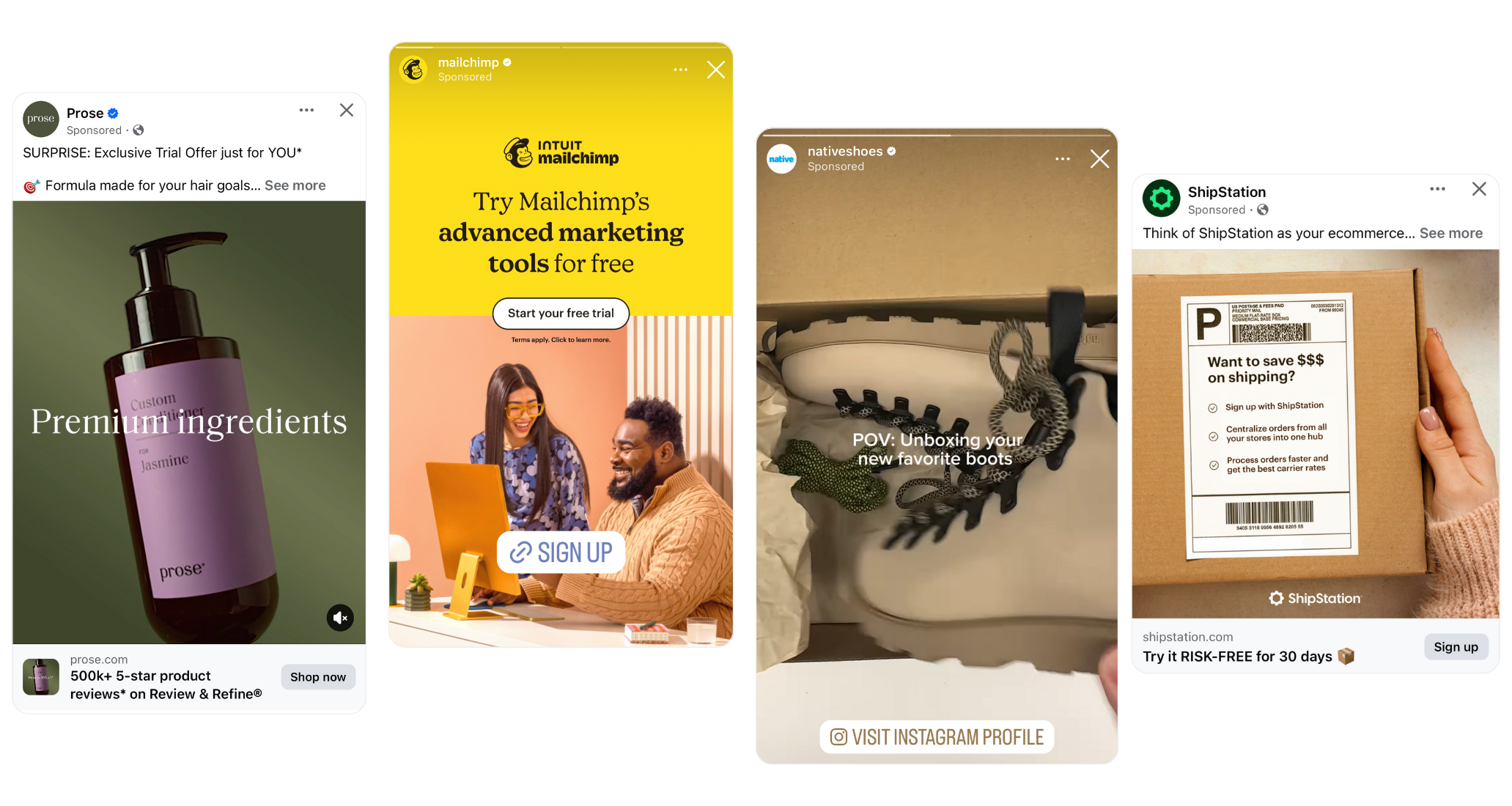
Social media lead generation campaigns are another effective way to keep potential buyers engaged. Not only do these campaigns reinforce brand recall, but when someone opts in, you gain something priceless: a direct connection through their email address.
Lead Generation Social Ads
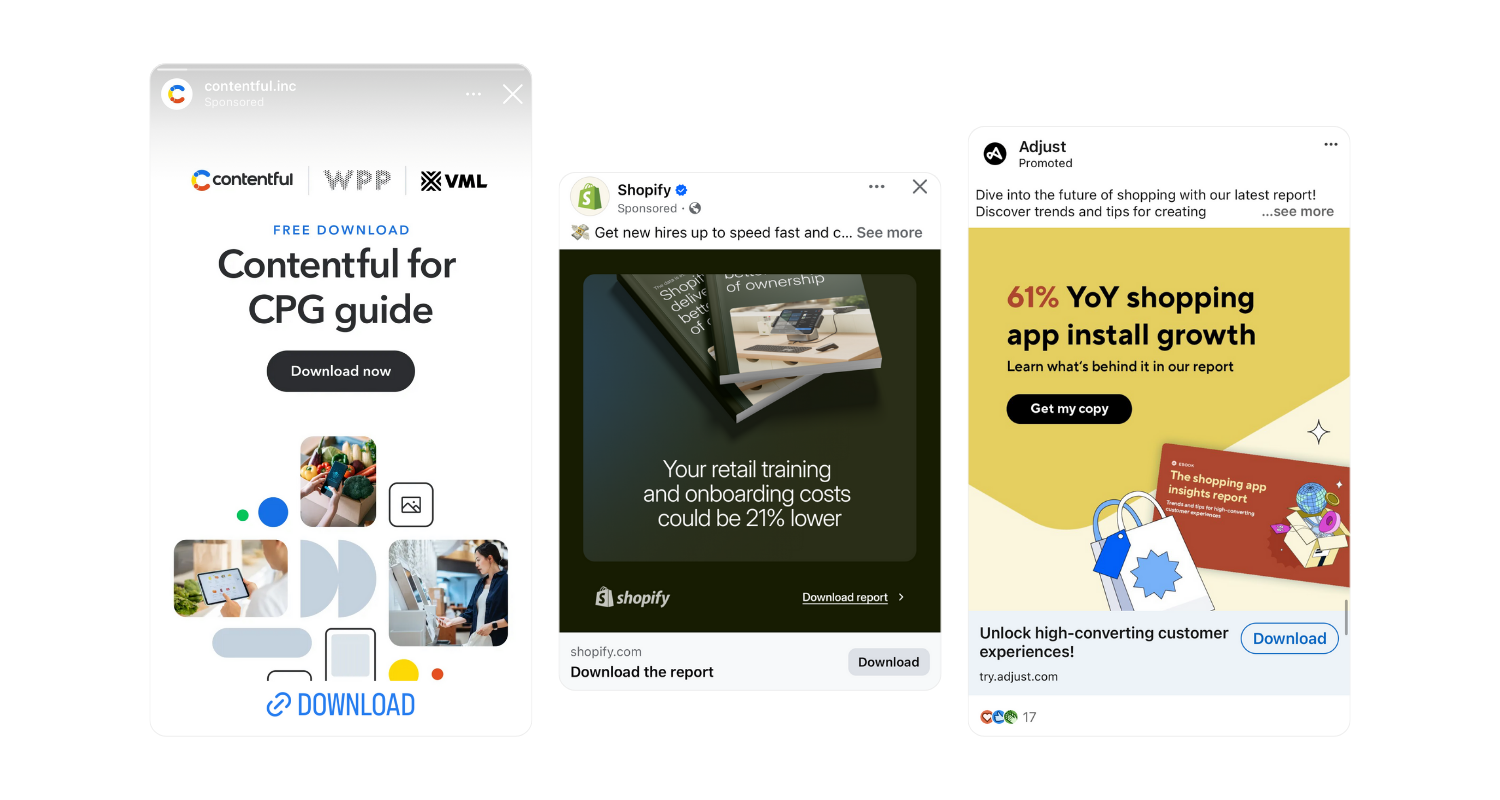
Which brings us to the next tactic…
3. Email Marketing Nurturing
Email marketing remains one of the most effective ways to nurture prospective buyers—if done right. The key is balance: avoid overwhelming your audience with too many emails and focus on delivering relevant and valuable content.
One critical step? Reach out immediately with a welcome email when someone signs up. This is your opportunity to capitalize on their interest while it’s fresh. A warm, engaging welcome email can set the tone for your relationship, introduce your brand story, and highlight what makes your products or services unique. Learn more about the email marketing journey here.
Then, think of email marketing as a way to stay top of mind, so that when your audience is ready to buy, your brand is their first choice. Focus on:
- Authentic, story-driven content about your brand.
- Showcasing your best sellers and unique selling points (USPs).
- Tailoring campaigns to match where your audience is in their journey.
The goal isn’t just to sell but to build a relationship that fosters trust and loyalty.
4. Educational Content
We’ve all heard it before: content is king—and for good reason.
Educational content is one of the most effective ways to help your audience make informed decisions. Whether it’s through ebooks, whitepapers, webinars, or even short-form social media videos, this type of content positions your brand as a trusted authority while showcasing why you’re the best choice.
Here’s the key: don’t gatekeep. The more value you provide upfront, the more trust and engagement you’ll build in return. Sharing valuable insights freely can set you apart from competitors who withhold information.
And remember, educational content isn’t just for B2B. No matter your industry, your audience is looking for answers—be the brand that delivers them.
- A skincare brand could create a series of short videos explaining the benefits of different ingredients, paired with a downloadable guide on building a personalized skincare routine.
- A fitness brand might offer free workout plans or live Q&A sessions with trainers to address common fitness challenges.
- A tech company could host webinars or publish blog posts that simplify complex concepts, helping their audience feel confident in their purchase decisions.
- Even a coffee brand could share fun, educational content like videos on brewing techniques or tips for pairing coffee with different foods.
And, a great way to promote your educational content is through…
5. Social Media Marketing
When customers are in the consideration phase, one of the first places they’ll look to learn more about your brand is your social media profiles. Think of your social channels as a digital storefront, offering a glimpse into your brand’s personality, values, and products.
To capture and retain attention:
- Share authentic user-generated content and customer reviews.
- Highlight behind-the-scenes moments that humanize your brand.
- Showcase how your product fits into real-life scenarios.
- Ensure information is easy to find by using social media highlights for FAQs, product features, or promotions, and having cover photos for reels that quickly convey their content.
Make it easy for them to see why your brand is worth their trust—and, ultimately, their investment.
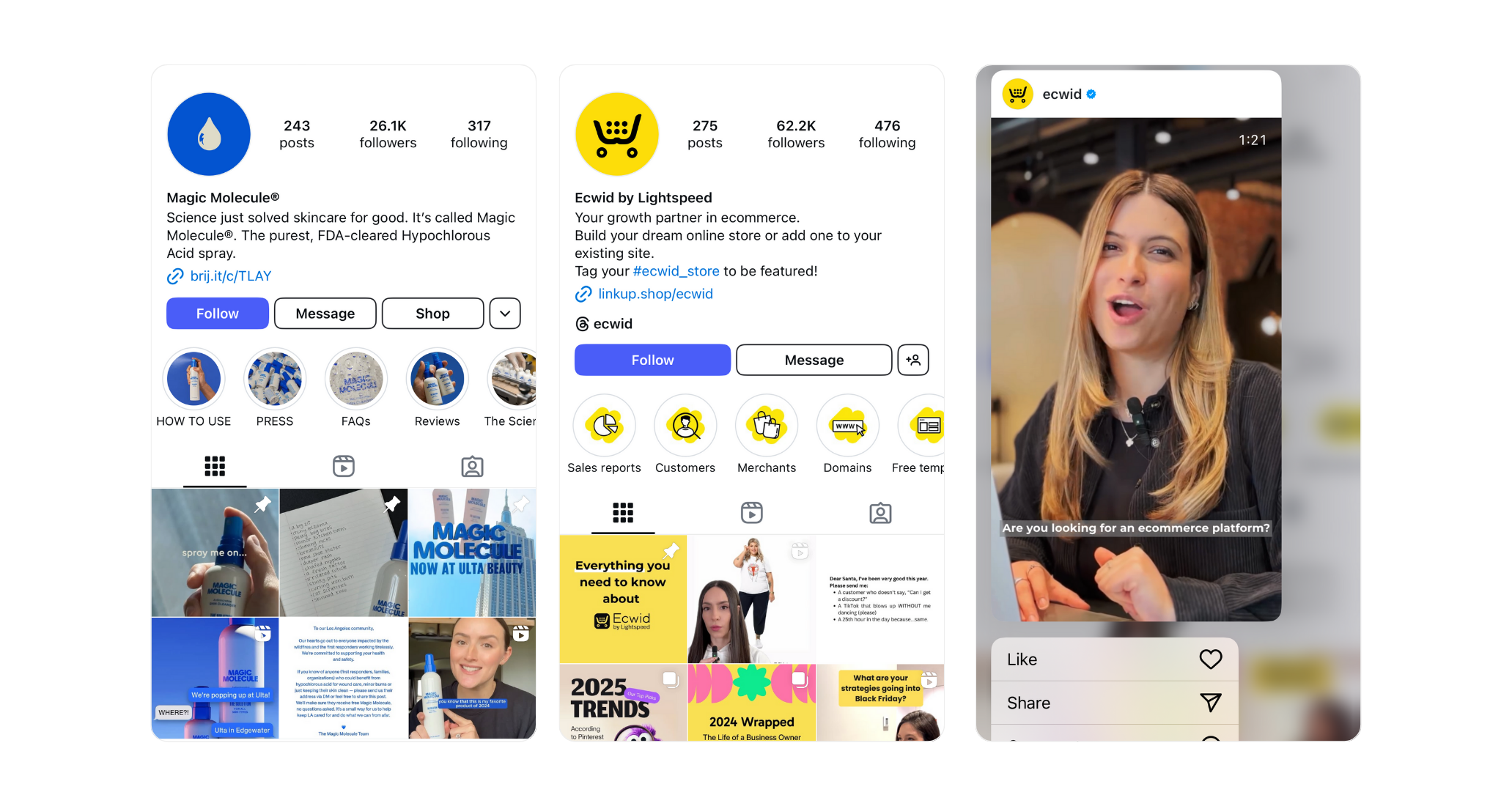
Magic Molecule is an excellent example of a brand that has optimized its social presence to engage and inform potential customers effectively. Their Instagram profile provides all the key information someone in the consideration phase might need, right at their fingertips.
Here’s what they’ve done well:
- Clear Story Highlights: Categories like “HOW TO USE,” “FAQs,” and “REVIEWS” offer quick, organized access to critical information. This reduces friction for potential buyers who might have questions about the product.
- Compelling Visuals: High-quality photos and videos showcase the product from every angle, including how it’s used, making it relatable and easy to understand.
- Pinned Posts: Key messages, like new retailer announcements or product benefits, are pinned for maximum visibility, ensuring visitors instantly see what’s most important.
- Consistency and Clarity: Their overall feed reinforces the brand’s story, values, and use cases, making it easy for users to explore and trust the product.
Another great example is Ecwid, which pins a post titled “Everything You Need to Know About Ecwid.” This video features someone clearly explaining the platform and its key benefits, making it easy for potential customers to quickly understand what the brand offers and why it’s valuable—all without leaving their social profile.
Don’t Underestimate The Power Of Mid-Funnel Marketing
Mid-funnel marketing may not be as flashy as top-funnel awareness or as results-driven as bottom-funnel conversions, but it’s the glue that holds the buyer’s journey together. By focusing on tactics like remarketing ads, email nurturing, educational content, social media engagement, and optimized product pages, you can keep your brand top of mind, build trust, and provide the value your audience needs to make an informed decision.
In today’s unpredictable and nonlinear customer journeys, the brands that succeed are those that meet their audience where they are—whether they’re comparing options, seeking reassurance, or simply looking for a reason to trust you. The more touchpoints you create and the more value you deliver, the stronger your chances of guiding your audience toward choosing your brand.
We’d be happy to help you implement the strong mid-funnel tactics your marketing strategy needs. Contact us here!
Read it first:
Get new articles delivered to your inbox
ABOUT THE AUTHOR
Marie-Joëlle Turgeon
Marie-Joelle works at Bloom, a digital marketing agency, as the Director of Marketing. She's passionate about digital marketing tactics (from social media to web design) for B2B businesses looking to grow online.




Share this: